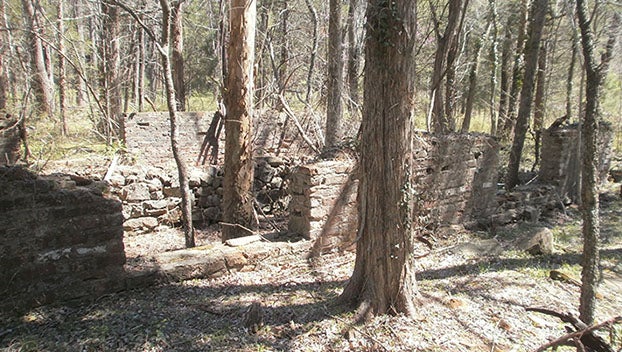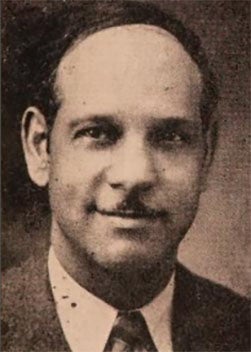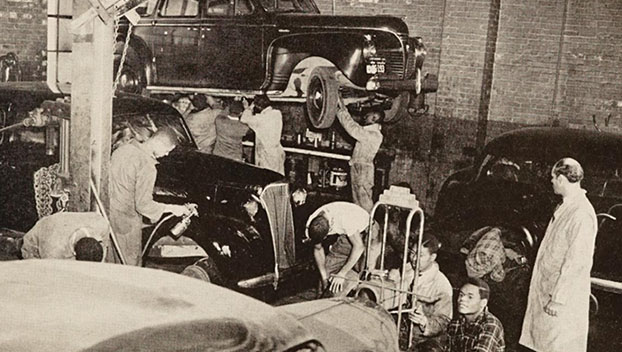Cumberland Middle School students bring attention to local history
Published 12:51 pm Friday, September 29, 2023

- A look at some of the springs and ruins left behind in Lucyville. (Photo courtesy of Virginia Department of Historical Resources)
|
Getting your Trinity Audio player ready...
|
How you tell a story matters. At times, there are people who don’t make it into the history books, but contribute just as much to a region. That’s what some classes at Cumberland Middle School are focusing on, drawing attention to people in their community who made a difference.
Since 2001, Lewis Longenecker’s history classes have done the work for four historical signs, spotlighting Cumberland residents who made an impact. It started when students returned to school after COVID lockdowns and were split to alternate between virtual and in-person learning.
Longenecker decided to do something different, as snow days were causing one set of students to get behind. To give them time to catch up, Longenecker’s other students took part in then-Gov. Ralph Northam’s Black History Month Historic Marker contest.
For this contest, the students created a marker for Samuel P. Bolling. You can see that sign now as you drive down Route 45, in front of property he used to own. Bolling is known for purchasing himself and his wife out of slavery in 1819 and then going on to serve in the Virginia House of Delegates.
“This gives a chance for students to learn and research local figures that most history books don’t mention and locals haven’t heard of,” said Longenecker.
The project continues
With the success of this sign, as it was one of 10 chosen, Longenecker decided to continue the project. During summer school, the students did two signs for the Asian American Pacific Islanders Historic Marker contest. One was for Kim Kyusik, who was an influential leader in the Korean independence movement. His marker is on the Roanoke College campus where he graduated in 1903. The other was for Art Matsu, the first Japanese American NFL quarterback. He was also the first Asian American student Athlete at William and Mary and taught and coached at several high schools in Virginia and at Rutgers University.
“The students fact-check every sentence and make sure that it has a primary source,” said Longenecker. “These are not to put someone on a pedestal as this has to be factual information.”

Theodore Coleman, born in Lucyville, was the grandson of its founder, Reuben Coleman.
The students were ready to participate again for the Black History Month contest, but with the change of leadership to Gov. Glenn Youngkin, the program was discontinued. Looking for a different option, Longenecker received a National Education Association Foundation grant to cover the cost of the Historical Roadside Marker.
Currently, due to a backlog, the Virginia Department of Historic Resources is only accepting five applications per quarter. Fortunately, the latest project from the middle school students was one of them.
For the project, this sign highlighted the contributions of two formerly enslaved community members. Rev. Reuben T. Coleman challenged segregation as the founding pastor of Mt. Olive Baptist Church and ran the Colemanville Mineral Springs Resort. His brother-in-law Shed Dungee, represented Cumberland County in the House of Delegates
Cumberland Middle School digs into history
Along with learning about lesser known historical figures, this project provides many opportunities for the Cumberland Middle School students. According to Longenecker, the students do all the work for these signs. They come up with what’s written on the signs and edit it down, choose where the marker goes, create story maps and more. Once the project is complete, the students are the ones speaking at the ceremonies and collaborating on what should take place.

A photo of Theodore Coleman, far right, as he taught automobile mechanics at Armstrong High School. Theodore was the grandson of Lucyville’s founder, Reuben Coleman. This came from the 1949 Armstrong High School yearbook.
“The students are the ones responsible for educating others about these people who did substantial things,” said Longenecker. “They communicate it through many ways and this project can show them career type of opportunities as they organize and work with different technology and hands-on activities.”
And students feel what they’re doing is important, drawing attention to local history.
“It helps to discover history, not only of what you learn in history class, but what is the history all around you,” said Audrey Dickstein. “(You see) what the world around you used to be like and what has changed over time.”
Barry Jones agreed.
“It is good to know history that is local,” Jones said.
There is no word on when the Cumberland classes will be back with another marker, but the students plan to keep digging into Virginia’s history.



